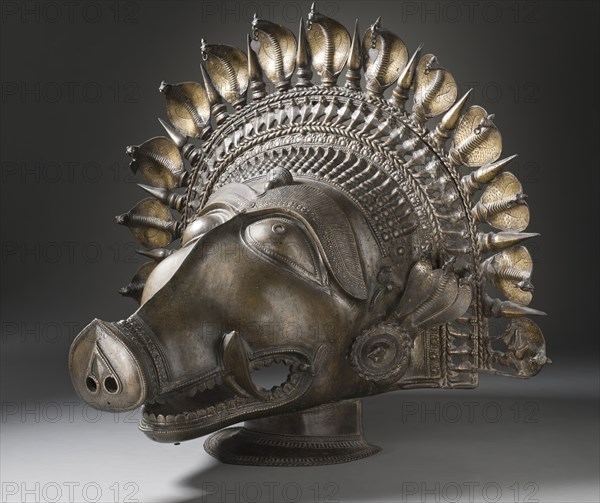
Sujet
Dancer's Headpiece in the Form of a Panjurli Bhuta (boar spirit deity), 18th century Creator: Unknown.
Légende
Dancer's Headpiece in the Form of a Panjurli Bhuta (boar spirit deity), 18th century. Created in the southwestern coastal region of India (modern Kerala) for ritual use in dance festivals propitiating and honouring the local tutelary spirit deities (bhuta). Hundreds of these elaborate community celebrations, called Dharmanema festivals, are held every year between February and May to venerate the regional pantheon of over 350 spirit deities. The boar spirit deity (Panjurli), one of the most powerful and important Genii Loci, is said to be born of the forest and is thus particularly revered in this lush tropical region. He is also responsible for upholding righteousness through his identification as a manifestation of Vishnu, the supreme Hindu god of preservation and social order. This religious correlation is expressed by Panjurli's visual similarity to Varaha, the boar-headed avatar of Vishnu. Dancers' headpieces and masks from Kerala are fashioned in a wide variety of iconographic forms and local artistic styles. They are typically quite large in size, and made in one of three primary media: wood, papier-mâché, and bronze/copper alloy. This headpiece is a tour de force of the genre because of its superb artistic quality, pronounced facial modelling, and complex ornamentation.
Crédit
Photo12/Heritage Images/Heritage Art
Notre référence
HRM23B03_468
Model release
NA
Property release
NA
Licence
Droits gérés
Format disponible
59,1Mo (2,0Mo) / 42,0cm x 35,3cm / 4960 x 4166 (300dpi)